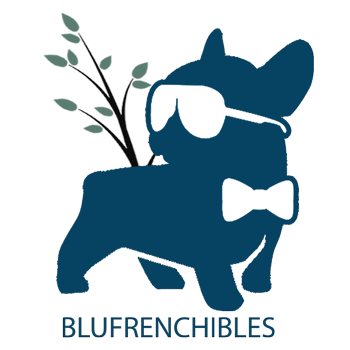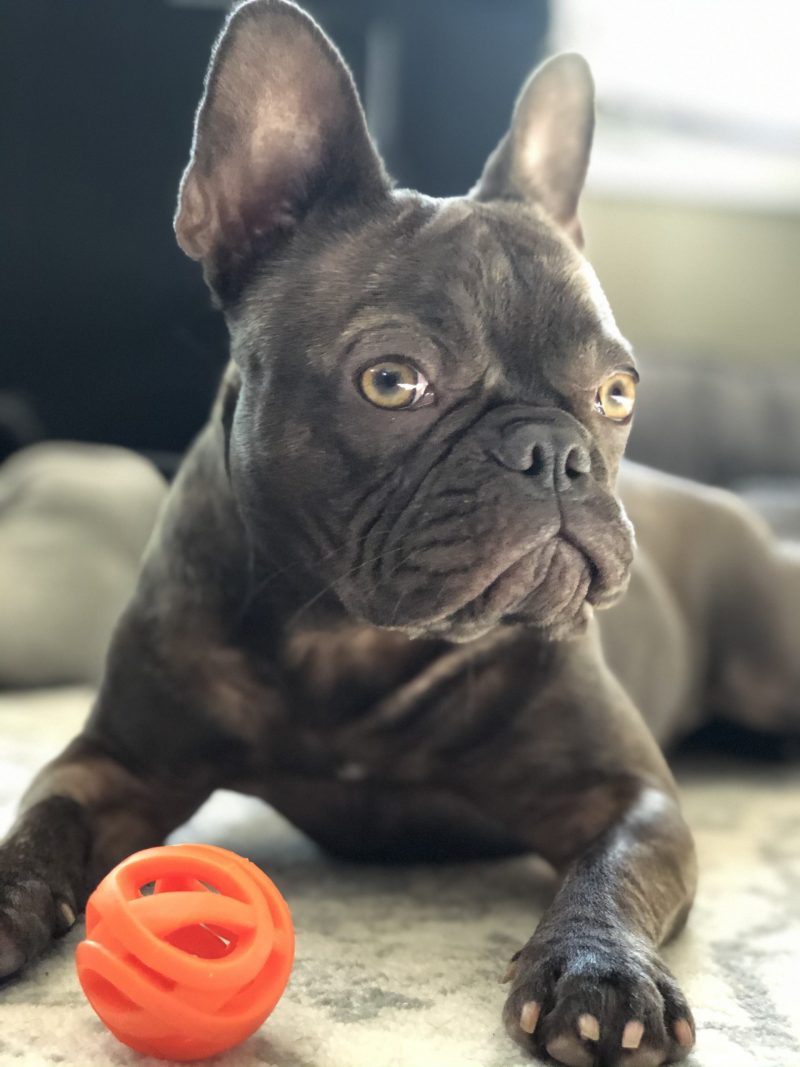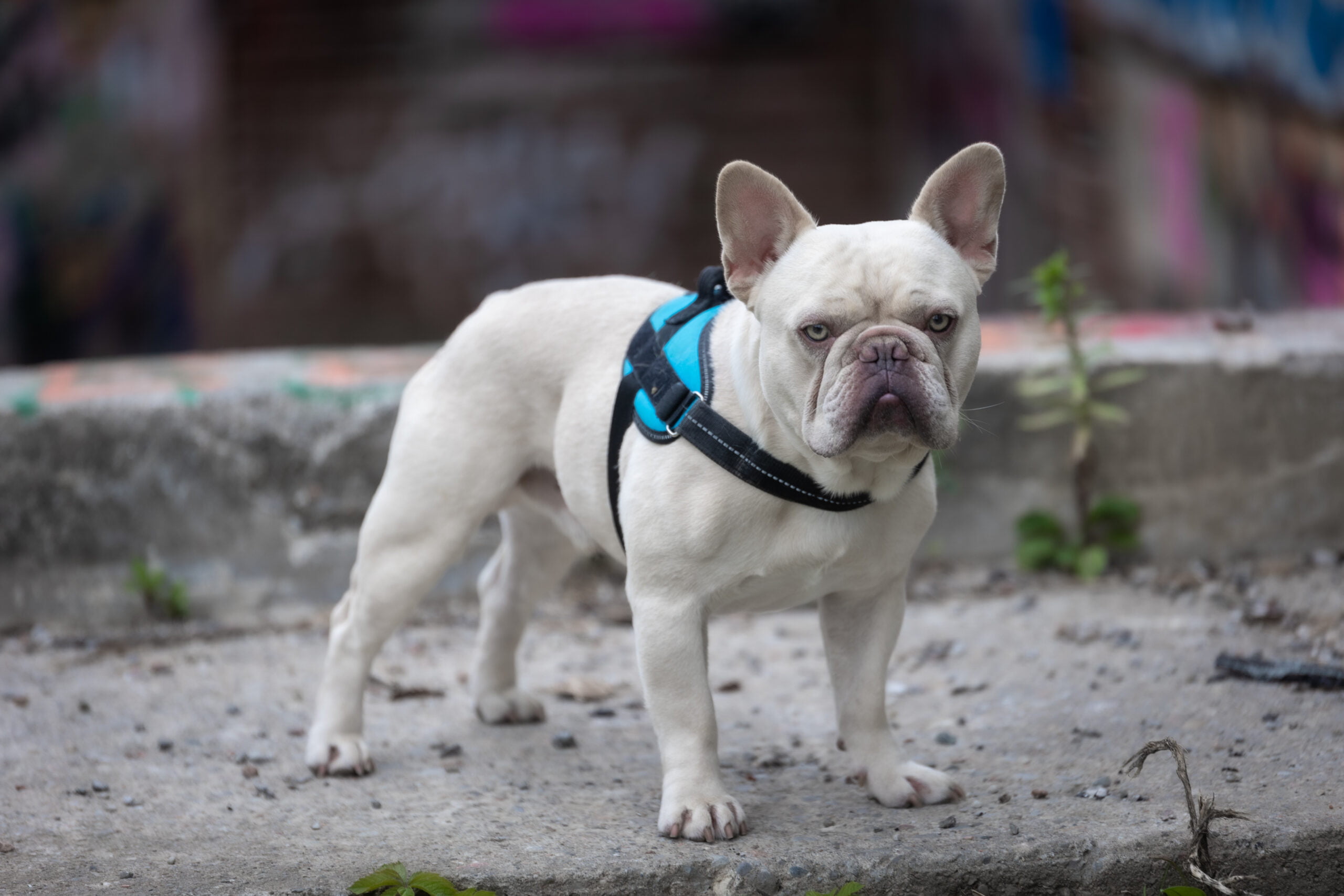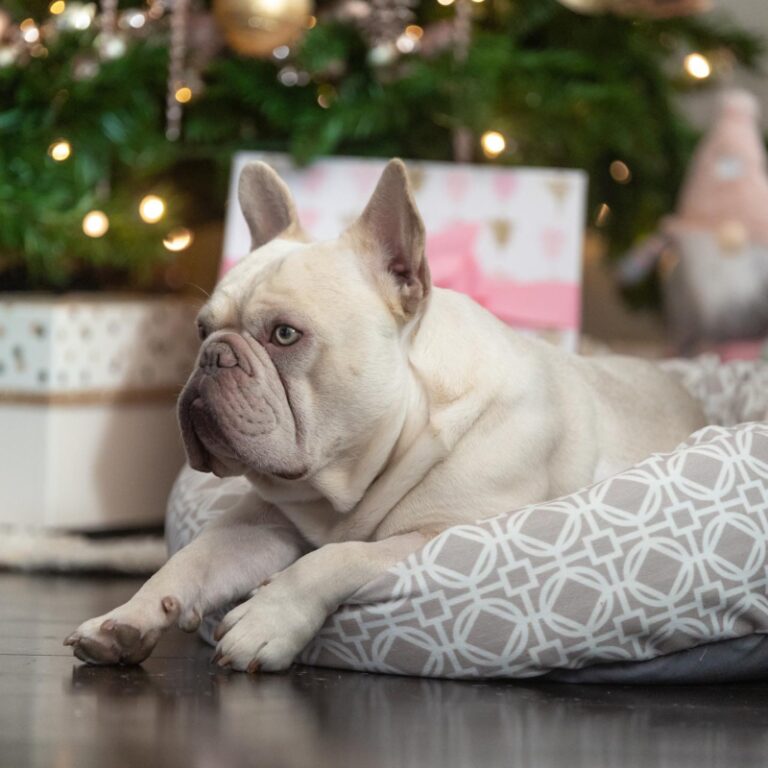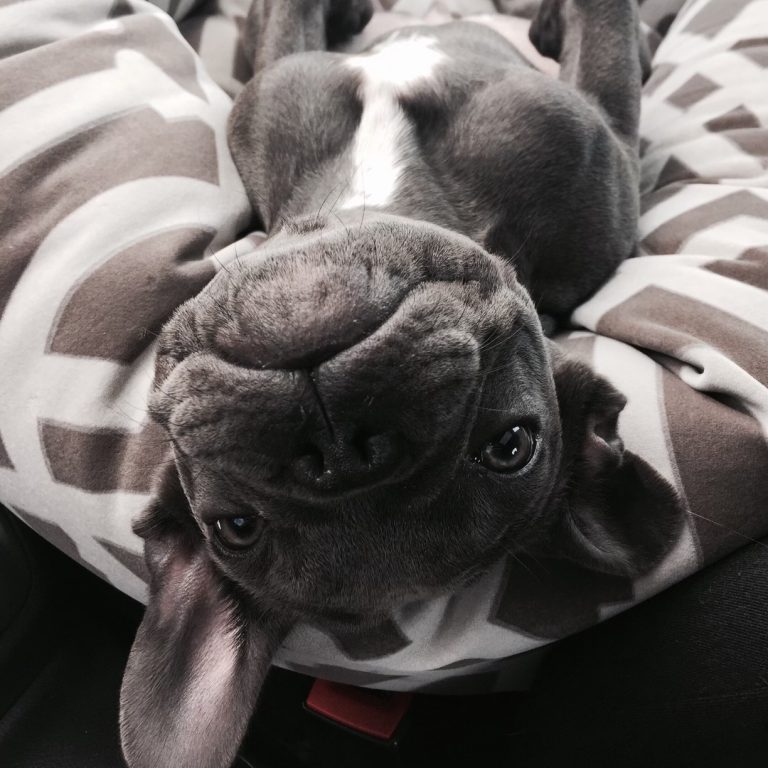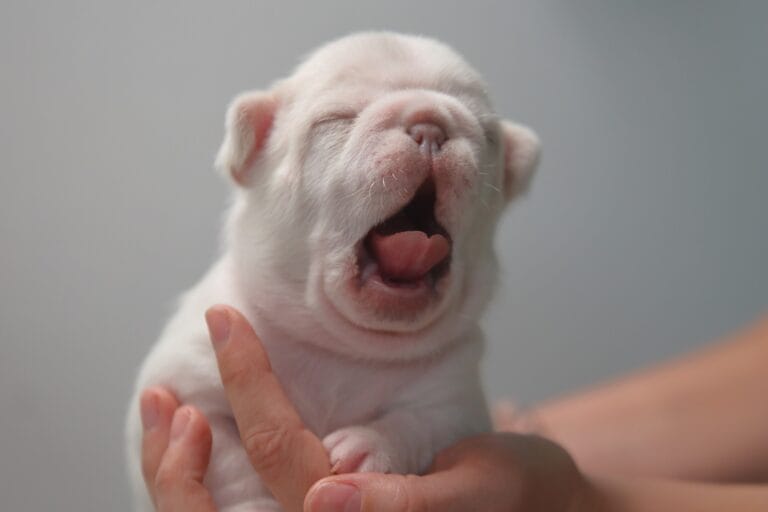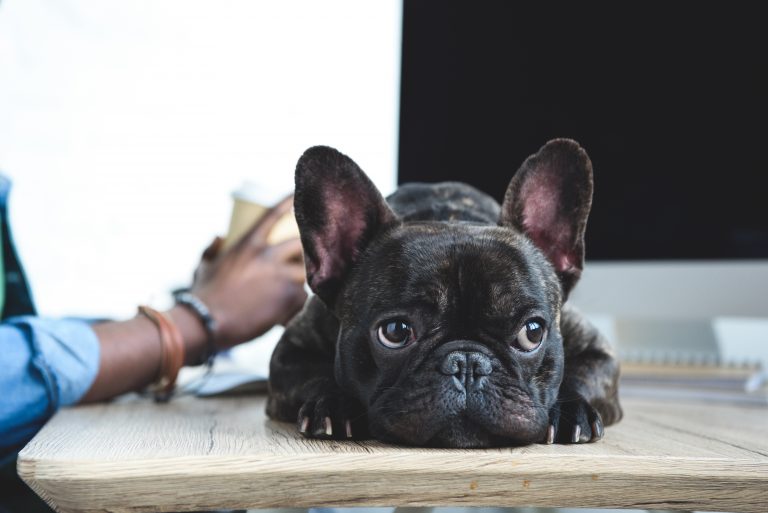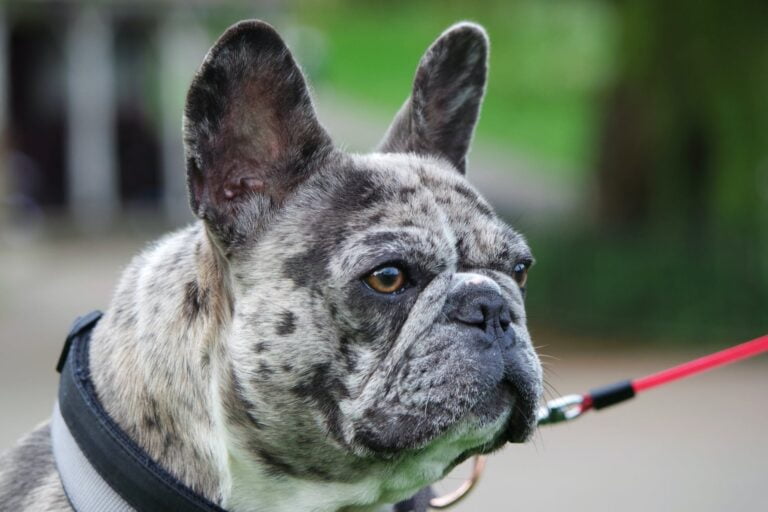French Bulldogs are known for their wide range of coat colors. But have you ever wondered how these colors are decided? The process is not as complex as you might think. Let’s break it down.
The Basics of Color Genes
Every Frenchie is made up of genes, two-part units of heredity that are responsible for everything from their health to their coat color. Each gene is composed of two copies, one from each parent.
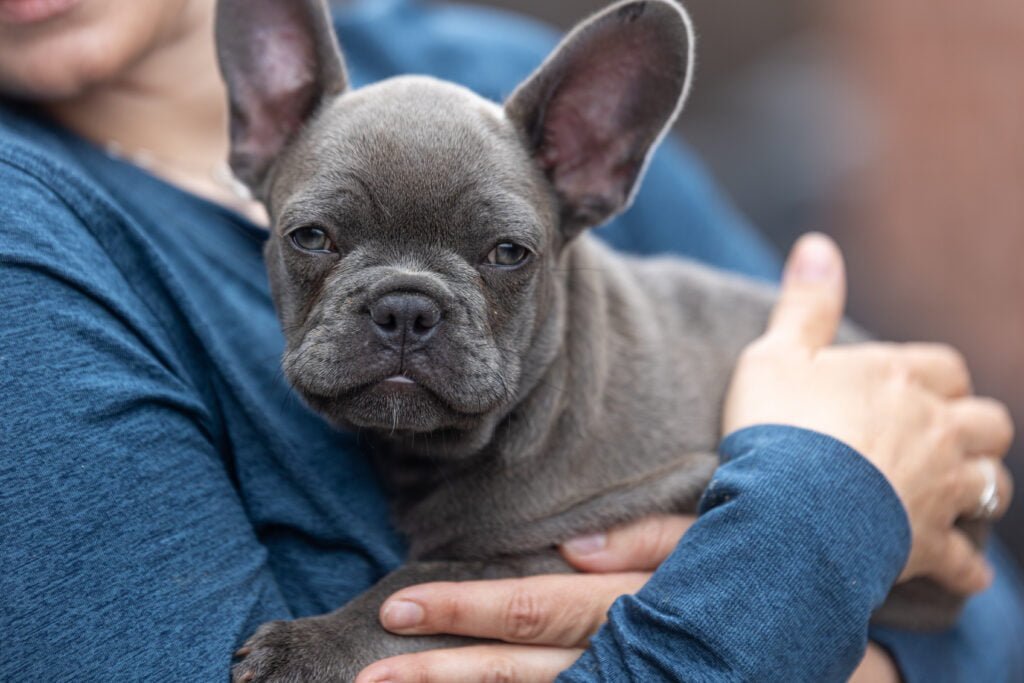
In terms of coat color, a puppy will display a specific color if it gets matching genes from both parents. If they receive one gene of a certain color, they are known as carriers. They won’t display the color but could pass it onto their offspring.
Genetic Representation
Usually, color genes are represented by letters. A capital letter represents the absence of a gene, while a lowercase letter represents the presence of a gene. Each gene from a parent is represented separately by a slash.
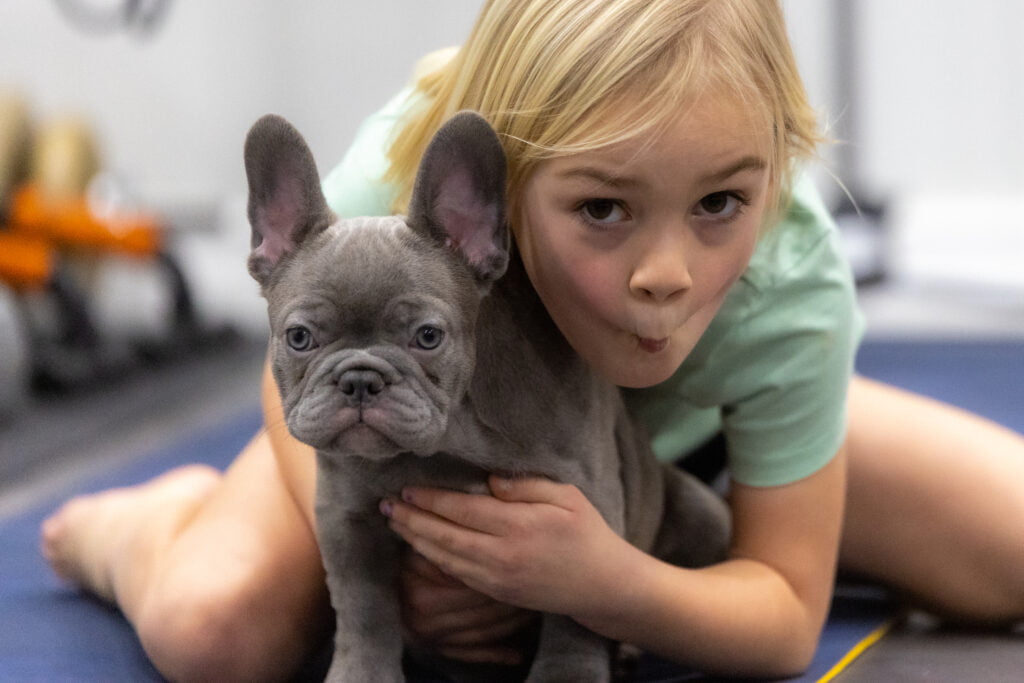
For example, if a dog carries two lowercase ‘b’s, shown as ‘b/b’, this means it has two copies of the brown gene and will have a brown coat. If it has two capital ‘B’s, written as ‘B/B’, it doesn’t have the brown gene at all and will not display brown. If it has a lowercase ‘b’ and an uppercase ‘B’, in either order, it carries one copy of the gene. While it won’t display brown, it could pass the gene to its offspring.
Breeding and Color Predictions
In reproduction, a dog with two copies of a color gene, like ‘b/b’, will pass one copy to all its offspring. If it’s bred with another dog with the same gene setup, all their puppies will display that color.
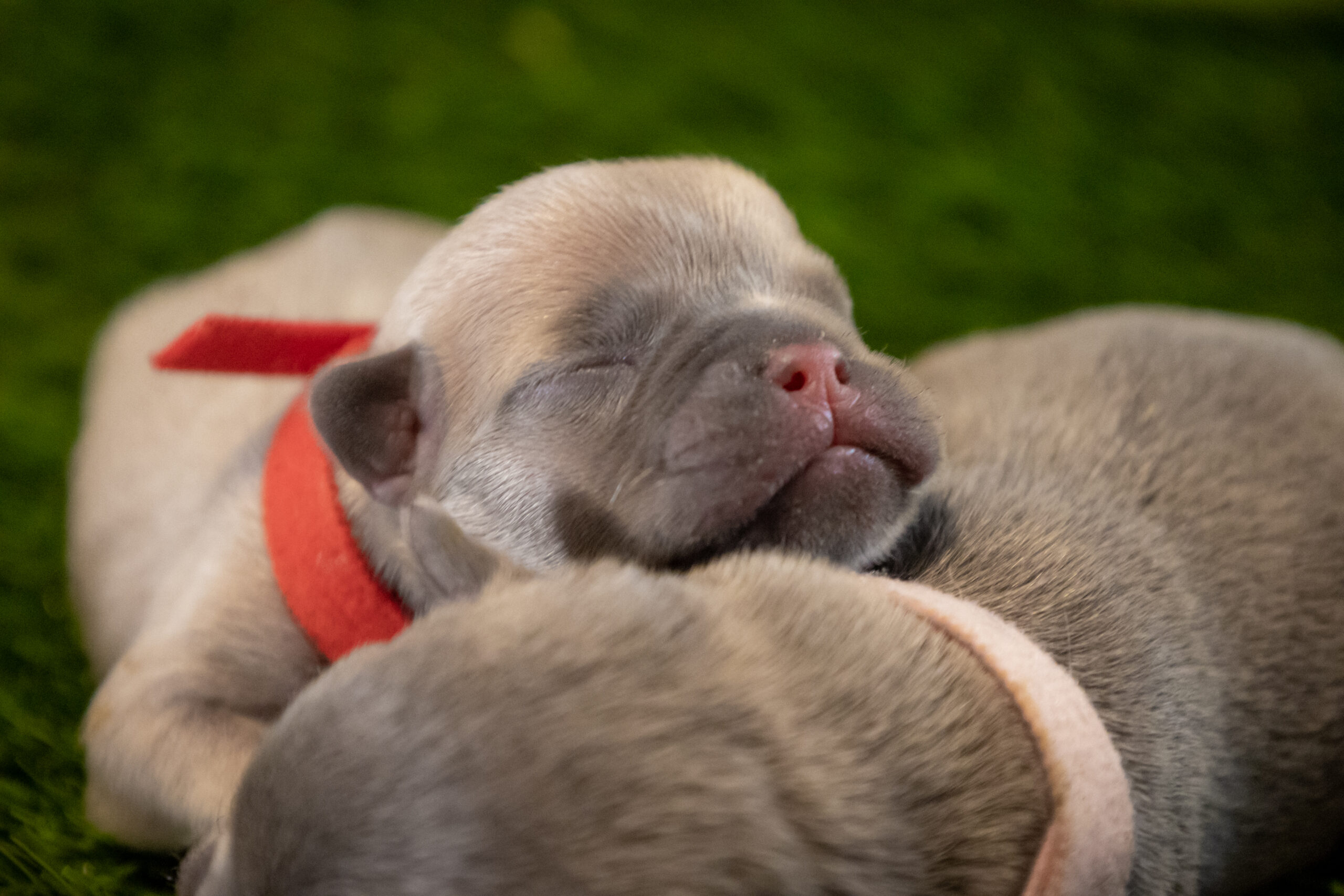
A carrier (‘b/B’), however, will only pass the gene 50% of the time. So, when a carrier breeds with a dog carrying two copies of the color, only half of the offspring, on average, will display the color. If two carriers breed, the chance of producing a puppy displaying the color drops to 25%.
This pattern applies to all other color genes, such as blue, cocoa, and cream. If a dog carries two copies of multiple color genes, you can expect different color combinations or one color dominating the other.
Rarer Colors
Some combinations result in rarer colors. For instance:
- A lilac Frenchie carries two copies of blue and cocoa genes.
- An Isabella Frenchie has two copies of chocolate and blue genes.
- A platinum Frenchie has two copies of cocoa, blue, and cream genes.
These colors only appear when a Frenchie carries two sets of these specific genes.
Terminology Differences
Note that different sources may refer to the same color genes differently. For instance, the brown gene can also be referred to as chocolate or B-locus. The blue gene might be called the dilute gene or D-Locus.
There are also attributes such as brindling and merles that need only one copy of a gene to change a Frenchie’s appearance.
In essence, predicting the coat colors of a French bulldog litter is a fascinating blend of genetic science and probability. Understanding the basics can help you appreciate the diversity of colors these adorable dogs can have.
